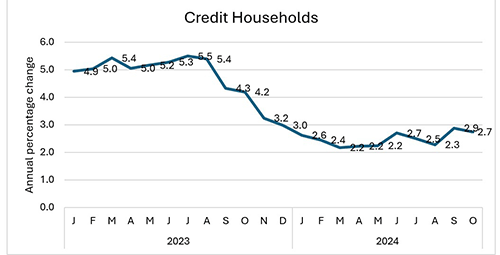A local economist has weighed in on last week’s repo rate reduction, saying it may have come too late for already heavily indebted households still reeling from exorbitantly high interest rates exacerbated by a prolonged Covid recession.
Last Wednesday, the Bank of Namibia announced the third interest rate cut since July 2024, bringing the cumulative domestic rate cuts this year to 75 basis points, compared to the South African Reserve Bank’s (SARB’s) 50 basis points reduction in 2024.
Pondering if the repo rate cut will benefit consumers, managing director of Twilight Capital, Mally Likukela, said there are two sets of consumers, namely the business and households. “Business consumers will benefit because they have fully leveraged their loans and every drop in the cost or repayment can directly go into saving or re-investment, but households, whose balance sheets remain shattered and crippled, cannot even see these benefits. Every percentage point accrued from the repo rate cut will be swallowed by already waiting cost of living”, Likukela said.
He added that a notable growth in overall credit extended to the private sector has declined significantly despite significant efforts by the central bank to stimulate credit demand by maintaining an accommodative monetary policy stance.
This, Likukela noted, signifies a total disconnect between credit demand and the real economy as economic agents are unresponsive. He continued that the domestic monetary policy has become less effective in injecting stimulus into the economy to raise appetite for credit.
“The first point hinges on the prevailing poor economic outlook of the future. The bleak future of the economy makes borrowers, especially households, to think twice before entering any financial contract because prospects do not guarantee affordability of loans when it comes due,” Likukela stated.
In addition, Likukela pointed out that high unemployment, job insecurity and high cost of living are among the factors households first consider before committing to more financial obligations like loans.
“The other point is that the balance sheets of most economic agents, both businesses and households, still remain weak and devastated following an extended period of Covid-induced recession and hence do not see themselves qualifying for new loans and hence are sceptic about taking them,” Likukela noted.
The Twilight Capital MD added that the Common Monetary Area (CMA) pegging arrangement between the Namibia dollar and the South African rand and the proximity of larger financial markets in South Africa makes domestic financial lenders reluctant to pass on benefits of lowered cost of capital to domestic borrowers.
“One just needs to look at the interest rate differentials between the prime lending rate and the average lending rate where you can clearly see the variances in favour of commercial banks,” Likukela stated. “Numbers don’t lie, look at the graph that shows credit extended to household, there is a significant downward trend, and this will continue for considerable period because there is simply no appetite for new credit as most households are already heavily indebted as conformed in the most recent Financial Stability Report published by the Bank of Namibia. This can only be reversed after six to seven quarters when the full impact of the repo rate cut decision fully reaches the real economy,” Likukela explained.
Meanwhile, local economist, Klaus Schade expects the latest repo rate cut to provide further relief to consumers since the prime rate will drop by 25 basis points, which impacts all other interest rates based on the prime rate.
“It could also encourage businesses to invest in expanding their businesses since the economic prospects are more favourable and new business opportunities are opening in the area of renewable energies, green hydrogen production for domestic use and later for exports as well as opportunities around oil and gas exploration,” Schade stated.
However, he emphasised that interest rates are still high at 7% for the repo rate.
“The last time Namibia had to cope with this level was between April 2016 and July 2017, when inflation was much higher than it is currently. The cautious approach that BoN takes is therefore a clear indication they are more concerned with maintaining the peg with the rand than with inflation.”


